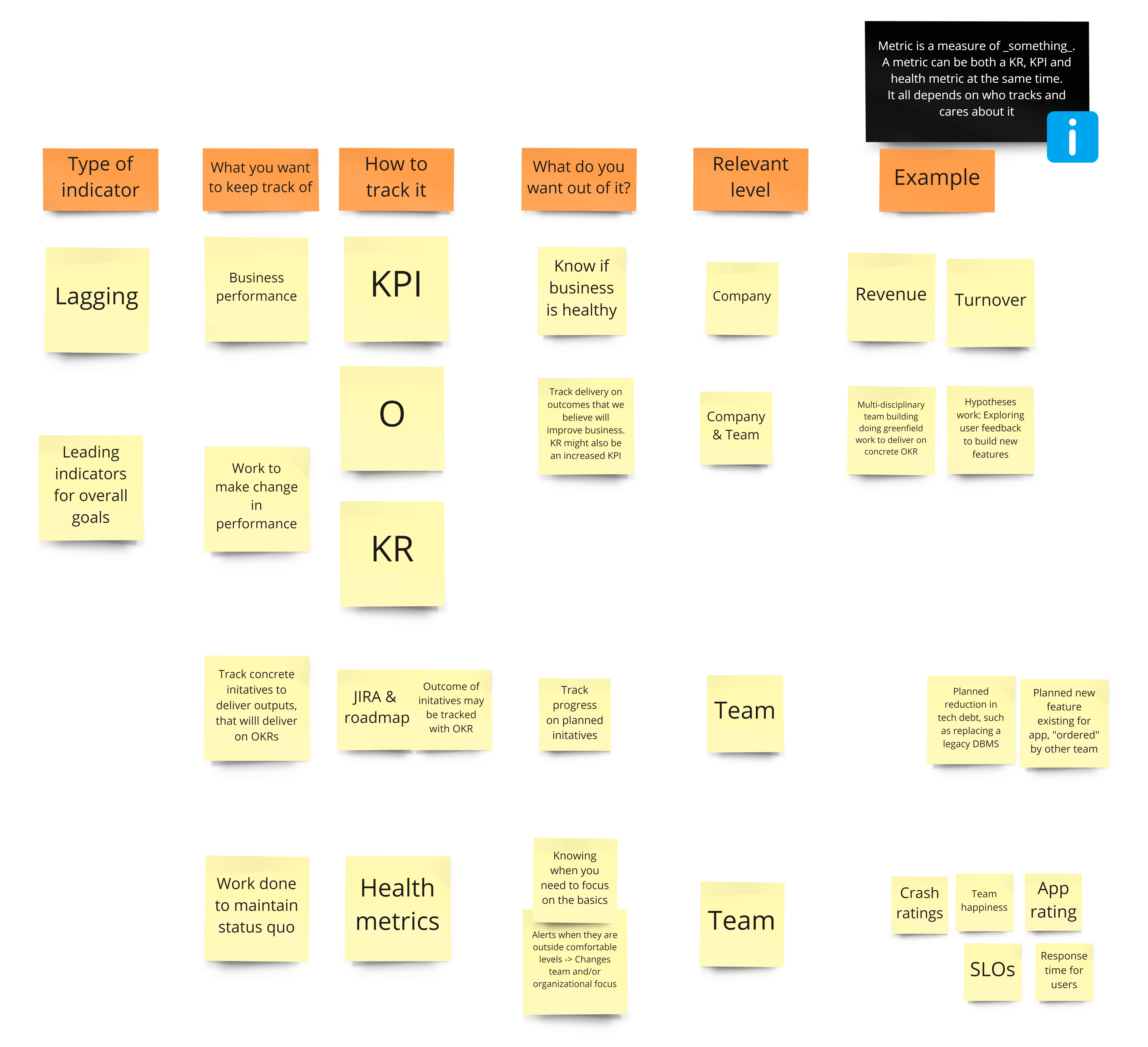OKRs are not a silver bullet for tracking work
OKRs are becoming increasingly popular. Most business want to use them for creating focus, tracking if initiatives to decide if they hit on desired outcomes, as well as creating alignment in the organisation. Not only for new initiatives, but across the business. By some, it seems to be looked at as a silver bullet for tracking work. In my experience, OKRs are not suitable for everyone and everything. Being clear on when and how you use them, is far more important than being able to say that one uses them in marketing.
An example: A team who works on a specific feature, ordered by a customer the year before, will of course struggle with defining the right Key Results. To them, the result is delivering the feature, a binary goal. The desired outcome is not clear to them, and it’s not even clear if that initiative is the only or the best one to deliver the outcome someone desires. The teams I’ve worked in this context, feel that they’re trying to retrofit a model to thier context, solving problems that they might not agree exsist.
Thankfully, I’m not alone in seeintg this. Christina Wodtke who wrote the fantastic book Radical Focus, recently wrote this article about not everyone not needing OKRs. Where OKRs are great to track a desired change in a KPI, not all work will contribute to that change. HR paying out wages does not need an OKR, it’s just something that needs to get done. This is not only specific for HR. Most business areas have some parts that just needs to get done. For this OKRs are not the right tool. Wodtke calls this heartbeat work.
With this in mind, and as I’ve seen the same problem a few times, I’ve worked on a model to explain how different metrics might fit together in a well-established organization with various types of work that needs to get done. It’s been useful to me; it might be useful to you too.

To add some explanation: The idea is that there are several levels of metrics, and needs for metrics. The levels would be something like:
The old school Key Performance Indicators shows what the business area or whole organization values as important in terms of business performance. What would be acceptable levels for each of them?
Then you define one or more Objectives, that is meant to change performance in the KPI. You define several Key Results that might tell you if you’re on the right track.
The OKRs might be broken down by other units/teams, so that they are more meaningful to them
Finally, we define some initiatives, that is the actual work or output that can contribute to desired outcomes.
In addition, teams with well-established responsibilities might also need to track indicators that shows if the “heartbeat” work is on track. If your app rating falls to the ground, that new feature might not matter. You’ll need to refocus.
Based on this, some teams might only work directly with OKRs, not even needing any task management as the team is so small, and things are moving fast. Other teams will have a few working directly to test hypotheses to move the needle on an OKR, while others work on an initiative that was promised to another department. I’ve found that it helps in building understanding, and in turn make OKRs useful, by being aware of the differences and track them appropriately. OKR, like agile, is not a silver bullet. We’ll always need to tailor to context.
Any thoughts, comments or corrections after reading this post? Please, do reach out by E-mail. Thanks.
Post is tagged with: #Okr #Management